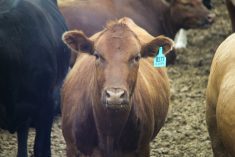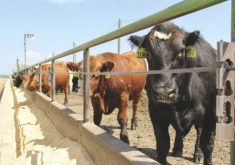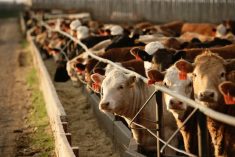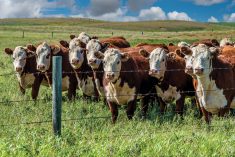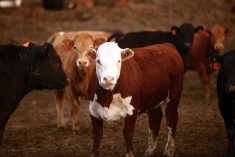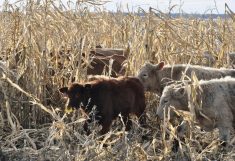Even with no-till, grain farming depletes soil carbon levels, says a University of Alberta researcher.

“If you increase crop production above ground, you decrease carbon production below ground,” said Barry Irving, manager of the university’s ag research stations. “When you take production from below ground and move it above ground, that’s great for agriculture — but not necessarily for carbon sequestration.”
Grasslands store between 10 and 30 per cent of the world’s organic carbon, said Irving, who spoke at a Foothills Forage and Grazing Association workshop last month. Today, there are more than 300 gigatonnes of carbon is stored in temperate grasslands, but only three per cent of that is in grasses and plants.
“Where’s the carbon in the grasslands? It’s in the soils. It’s not in the plants.”
In a study looking at the carbon profile in both grasslands and annually cropped land, researchers found the former stored around 80 tonnes of carbon per hectare versus 60 tonnes per hectare for cropped land. In the Parkland region, that number is bigger — a 40 to 45 per cent decline in carbon, at close to 130 tonnes per hectare on the grassland compared to 70 tonnes per hectare on the cropped land.
Read Also

Mid-June rain a ‘godsend’ but forage growers manage expectations
Although chunks of Alberta got some major rainfall the weekend of July 21-22, the jury’s still out on whether it will make a difference to what has so far been a mediocre year for hay.
Using a value of $30 a tonne for soil carbon, Irving estimates that roughly $8.4 billion worth of carbon has been lost in the Prairie region, while $22.6 billion has been lost in the Parkland region.
“Is that coming back? Probably not,” said Irving. “That land is unlikely to go back to grassland. It’s going to stay in cereal production.”
Reducing cultivation will help, but at this point, it’s not enough to reverse all of the damage, he added.
“In our annual cropping systems — even with our newer systems of no-till or minimum till — we’re still disturbing the soil,” said Irving. “We’re still struggling with keeping carbon in the soil. When we compare those systems with undisturbed soils, they almost always have less carbon.”
But cattle feeders may hold the key to staving off some of that soil carbon loss.
“Light to moderate grazing enhances carbon,” said Irving, adding some studies have found a 37 to 41 per cent increase in soil carbon as a result of grazing.
“It comes back fairly conclusively that if you’re light or moderate grazing, you’re enhancing carbon uptake on rangelands.”
Management is key
But to make the most of carbon sequestration in a grazing system, cattle feeders need to make sure they’re managing their pastures the right way, said provincial forage specialist Grant Lastiwka.
“We have to watch what we take out of the system,” said Lastiwka. “But with improved grazing management, we have the ability to have higher carbon production.”
The first thing producers need to do is improve the productivity of their plants, through fertility and water retention.
“You need management to maintain a high productivity,” said Lastiwka. “There are a lot of pieces that are being managed. But those pieces to me come back down to managing for the nutrient cycling, for the water cycling, and for the solar energy capture.
“The more we can do to keep green plants functioning, the more potential we’ve got for carbon capture rather than carbon loss.”
Carbon is tied to the soil, so cattle feeders also need to make sure they’re maintaining their soil. And one of the best ways to do that is keeping the ground covered, through litter and plant biodiversity.
“The No. 1 thing is don’t lose the soil, and we know that bare soil is potentially able to move,” said Lastiwka. “It’s surprising how much erosion we can have even on pastures when they have a very low litter protection resource.
“Litter protects soil. We require litter. It’s water, it’s nutrients, and it’s sunlight we’re managing.”
Lastiwka also “greatly supports biodiversity,” through things like cocktail cover crops that use “multifunctional” groups to contribute to the soil resource.
“We’re trying to manage plants so that their photosynthetic capacity is maintained at a higher level longer. We know those plants are part of extending the time in which roots can fix atmospheric carbon. That’s why we want biodiverse pasture stands, to keep it green longer.”
But measuring management effects on soil carbon isn’t an exact science (yet), and “more research is needed,” said Lastiwka.
“I don’t know what the answer is. I don’t know how much carbon we can capture,” he said. “But it’s important for people to realize they can be their own solution.”



